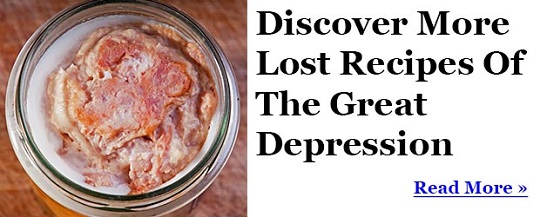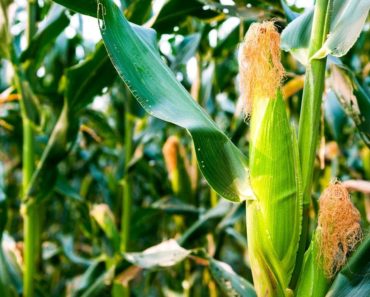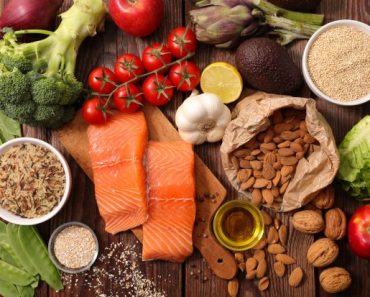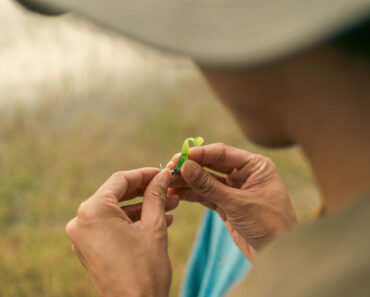We live with instability, and not just in our country. At any moment, some unstable leader of a nuclear-armed country could decide to flex his muscle and throw us all into survivalist mode. But you already know this, and you are either prepared or in the process.
Let’s talk food. We eat to live. But it doesn’t have to be only this. We can live to eat, too, if we have the right items in our pantry. There is no need to sacrifice nutrition, flavor, and long-term health if the foodstuffs we stock are right.
So, let’s analyze a list of food items that will satisfy our nutritional needs and make mealtime enjoyable from a flavor standpoint.
Protein
When we think of protein, we think of meat, poultry, and fish. These items do not have a long shelf life without refrigeration, but they are plentiful in the environment for those with the proper hunting and fishing equipment types.
There are other sources of protein, however, which do have a long shelf life, so long as proper storage requirements are followed:
- Some non-meat protein sources will not store for long either – eggs, for example. If you have chickens and they lay eggs, you have an excellent and fresh long-term source of protein.
- Nuts and beans are well-known sources of protein, and they also contain healthy unsaturated fats that are good for heart health. They are better stored in glass jars because their shelf life will be much further extended.
- Fortified breakfast cereals are also excellent sources of non-meat protein. Again, glass jars should replace the original packaging.
- Powdered milk is a good source of protein. It is a meat-based protein, and, if stored in jars, rather than its original packaging, it can last for months.
- Meat is an excellent protein source, yes. But it also has other things that contribute to health and good nutrition – vitamin B12, iron, zinc. If meat is not eaten much, these nutrients must be replaced by a plant-based protein that contains them – soy, for example. Other sources are certain legumes – peas and lima beans, for example. If you have a garden, you can grow these, eat them as harvested, and can the surplus for use later.
- Protein powders provide a complete source and have long shelf lives. These can be sprinkled on other foods, and, as long as those are flavorful, this is a great option, and they come in a variety of flavors.
- Carbohydrates
Carbs are critical to good nutrition, but many of them are perishable. Some, however, can be grown and have a relatively long shelf life if stored properly. Here’s looking at some carbs that will be appropriate for increasing or storing:
- Potatoes, all varieties: These can be quickly grown in a garden and, if stored in a cool, dark place, can last for weeks. Potatoes are high in starch and other essential nutrients, including fiber that helps with bowel movements, vitamin B-complex, thiamin, vitamin-C, vitamin-A, and potassium. All of these are important for good health.
- Sweet potatoes: Also quickly grown, these are a rich source of vitamins C and A and potassium.
- Pasta: spaghetti and noodles are excellent carb sources for your pantry because they have such a long shelf life, especially when stored in glass jars. And you only need water to cook them. Add some jarred sauces or other condiments, and you have a long-term source of carbs. Consider whole wheat and veggie pasta for a plethora of additional vitamin and mineral content.
- Cereal: Again, stored in glass containers, grains can last long. And many that sit on grocery shelves are fortified with vitamins and minerals. Granola-type cereals have even more. Sprinkling protein powder on them and whole powdered milk make this breakfast or snack full of nutritional needs.
Fats
You have heard the terms “saturated” and “unsaturated.” They refer to the two different types of fat we consume. Fat is an essential part of an appropriate diet, but the critical thing to remember is this: one is not as good for you as the other.
- Saturated Fats – These fats are found in meat – beef, pork, poultry – and some oils. They are also found in dairy products from cows and processed meats (bologna, sausage, bacon, hot dogs). In excess, saturated fats do cause bodily harm, especially high cholesterol, clog arteries, resulting in heart attacks or stroke.
- Unsaturated Fats – These are healthier for you and come from nuts, plant oils, and various kinds of fish, like salmon and tuna. And both of these types of fish come in canned varieties too. You can also get these types of fats from olives and avocados. Saturated fats should consume no more than 10% of your daily diet. Unsaturated fats do not harm your arteries and should comprise approximately 30% of your diet.
Fruits and Veggies
Most of us have heard of scurvy. It’s a disease that sailors contracted long ago because they did not have fruits on their ships for long trips, particularly citrus fruits with lots of vitamin C. We can always find some in-season fruits at grocery stores with lots of vitamin C but they have a short shelf life.
There is a solution, and that is dried fruits. Fruits can be dried into chips and packaged to last a long time. These are perfect sources of many vitamins and minerals, including that necessary C.
Vegetables are another matter. If you have a generator running a freezer, you can stock it with frozen vegetables that still have the vitamins and minerals in place. Buying canned vegetables means you will lose many of the essential nutrients. The other solution is to can fresh par-boiled veggies in glass jars – they’ll have a longer shelf life.
Types of Energy to Keep in Mind
You also have to keep in mind the types of energy you get from various food types.
There are two types of energy from food – short-term and long-term.
- Sources of Short-Term Energy – Carbohydrates and sugars give you short-term energy. If carbs are not all used, they turn into sugars in your body. And unused sugars turn into fat. But they will give you power for a short period if you have a physical project that won’t take too long to get done. Once those carbs and sugars are used up, you will experience a “crash” and become tired.
- Sources of Long-Term Energy – This type of energy is what you want over the long haul. If your daily life involves lots of physical activity, you need power that lasts. This type of energy comes from foods with lots of protein and iron – meats, dairy, fish, and protein alternatives, like raisins, nuts, and beans.
Students who have had health classes in school may remember some of this information. They may have even had to write an essay or paper on it. Some may have contacted an online writing service and asked to “write and type my essay.” Turning to professional writers may have been a good idea to save time, provided they have read the completed paper before turning it in. Otherwise, they might not have the necessary knowledge to complete survival preparations.
Condiments and Spices
Here’s the thing: If you are living in survivalist mode, life can become dull if you are doing nothing else besides gardening, hunting, sleeping, and eating. Your food, however, need not be bland. Having an ample supply of condiments and spices will help. Here are some tips about these:
- Pickles come in glass jars and last a long time
- If you want ketchup, mayo, and mustard, the problem is they must be refrigerated once opened. Purchase tiny containers of these items rather than large ones. And there are now plenty of grocery stores that sell them in packets rather than plastic or glass containers.
- The beauty of spices is that they come in jars and last an extended period. Keep a good supply of salt, pepper, garlic and onion powder/salt, and other spices typically used in cooking.
Focusing on Your Garden – It’s All About the Worms
To grow lots of great veggies in your garden, the soil must be full of nutrients, and it must be in good condition otherwise (easily tilled, for example). Growing veggies in gardens deplete the natural nutrients in the soil. Tilling over the waste will help restore some of those nutrients, but that will not do the excellent service of worms.
You want as many worms in your garden as possible, and it is possible to “grow” worms. All food waste should be thrown in that garden, including paper products. And throw any animal waste in there, too, especially animal poop. Worms eat virtually anything except products that are not biodegradable (e.g., Styrofoam).
As worms eat, they reproduce, and your population can double within six weeks. You can never have enough worms. But what most people don’t know is that worm poop is the best natural fertilizer in existence. The more worms you have, the more poop you have in the soil. This fertilizer will cause your plants to grow faster and larger. The additional benefit is that worm poop repels and kills many pests that harm vegetable growth.
So, There You Have It
This article should tell you all you need to know about stocking your pantry, especially if you have no commercial food resources. It takes careful planning, and you will have to rotate some food out over time. Eat those foods with the shortest shelf life first, but be mindful of the needed nutrition to function.






![Building an Automatic Organic Polymer Farm – ARK Survival Ascended [E34] Building an Automatic Organic Polymer Farm – ARK Survival Ascended [E34]](https://survivalcove.com/wp-content/uploads/2024/01/1706719870_maxresdefault-370x297.jpg)






















